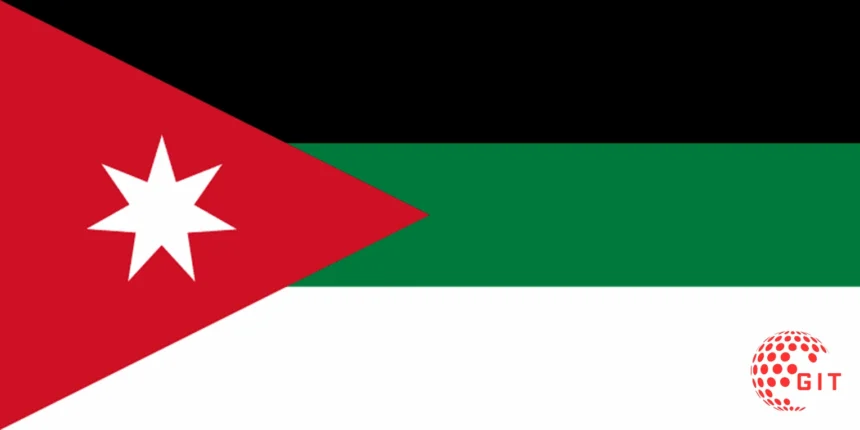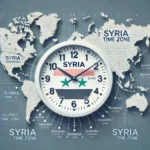Introduction
The “Syria flag” holds immense importance as a national emblem, reflecting the nation’s history, culture, and aspirations. Representing the Syrian Arab Republic, the Syria flag has evolved over decades to symbolize the country’s struggles, achievements, and unity. This article provides an in-depth look at the meaning, history, and symbolism of the Syria flag, offering insights into what each element represents for the Syrian people.
The Design of the Syria Flag
The “Syria flag” is visually striking, with its tricolor design and bold red, white, and black stripes. Each of these colors and elements holds a unique meaning that reflects Syria’s national identity.
- Red Stripe: Symbolizing sacrifice, red represents the bloodshed in the fight for independence and freedom from foreign rule.
- White Stripe: This middle band stands for peace, purity, and Syria’s bright future.
- Black Stripe: The black color represents the dark period of colonial oppression that Syria experienced in its history.
- Green Stars: Two green stars lie at the center of the white stripe, representing unity. Initially, these stars symbolized Syria and Egypt’s connection during the United Arab Republic era.
Historical Evolution of the Syria Flag
The “Syria flag” has undergone several transformations, each reflecting different historical periods and influences.
- Ottoman Influence (1517-1918)
Before Syria gained independence, it was part of the Ottoman Empire and lacked its distinct national flag. However, the Ottoman flag, with its red field and white star and crescent, represented the region during this period. - Arab Revolt Flag (1916-1918)
In 1916, during World War I, the Arab Revolt flag became prominent in Syria. Its red, green, white, and black colors were inspired by Arab history and were later adapted in the flags of several Arab nations, including Syria. - French Mandate Flag (1920-1946)
After the Ottoman Empire fell, Syria became a French mandate. During this period, a flag was introduced featuring a French tricolor with a Syrian star in the middle, symbolizing French colonial influence. - United Arab Republic Flag (1958-1961)
Syria joined Egypt to form the United Arab Republic, adopting a flag that included two stars symbolizing the unity between Egypt and Syria. This design has since influenced the modern Syria flag. - Modern Flag (1980-present)
The current design of the Syria flag, with its red, white, and black stripes and two green stars, was officially adopted in 1980 and remains a symbol of the Syrian Arab Republic.
Symbolism Behind the Syria Flag Colors
Each color and element in the “Syria flag” has a distinct and powerful meaning rooted in Syrian history, culture, and identity.
- Red: Represents courage and the sacrifices made by those who fought for Syria’s independence.
- White: Symbolizes the desire for peace and purity in the nation’s future.
- Black: Reflects the dark colonial past and struggles endured.
- Green Stars: Each star represents hope and unity, signifying Syria’s aspirations for a united Arab world.
Meaning of the Syria Flag’s Green Stars
The two green stars on the Syria flag symbolize the hope for a united Arab world and Syria’s strong ties with Egypt during the United Arab Republic. The stars also signify Syria’s desire to achieve peace, prosperity, and cooperation among Arab nations.
The Syria Flag’s Importance in Syrian Culture
For the people of Syria, the “Syria flag” represents national pride, resilience, and identity. It is a prominent part of many ceremonies and events, symbolizing unity among the Syrian people. From government institutions to educational settings and public gatherings, the flag serves as a powerful reminder of Syria’s history and ongoing quest for peace and stability.
The Syria Flag in International Relations
The “Syria flag” also holds significance in international contexts, where it symbolizes Syria’s sovereignty and place among the community of nations. It has become a visual representation of Syria’s diplomacy, cultural heritage, and contributions to global peace.
Changes and Controversies Surrounding the Syria Flag
The Syria flag has seen changes due to political developments and has sometimes been a subject of debate. Political factions have used different flags to represent their causes, creating a complex tapestry of symbols. The adoption of different flags by various groups reflects Syria’s multifaceted identity and history.
Syria Flag in the Global Diaspora
Syrians around the world, including those in the diaspora, hold the Syria_flag as a powerful emblem of their heritage and roots. It is common to see the Syria_flag at international gatherings, where Syrian communities unite to celebrate their identity and culture.
The Role of the Syria Flag in Education
The “Syria_flag” is an important tool in Syrian education, helping teach children about the nation’s history, values, and identity. Schools often incorporate lessons on the meaning and symbolism of the Syria_flag, encouraging a sense of patriotism and pride among young Syrians.
Legal Protection and Respect for the Syria Flag
Syrian law grants the “Syria_flag” protection as a national symbol, and there are legal provisions ensuring that it is respected and honored. Desecration or disrespect toward the flag can lead to legal consequences, as it represents the unity and sacrifices of the Syrian people.

FAQs
- What do the colors of the Syria_flag mean?
The colors represent sacrifice (red), peace (white), and the colonial struggle (black), while the green stars symbolize unity and hope. - When was the current Syria_flag adopted?
The current design was adopted in 1980 and reflects Syria’s Arab unity aspirations. - Why are there two stars on the Syria_flag?
The two stars symbolize the unity between Syria and Egypt during the United Arab Republic period. - How is the Syria_flag used in Syrian culture?
The flag is central to national events, educational institutions, and cultural gatherings, symbolizing national pride. - Does the Syria_flag have legal protection?
Yes, Syrian law protects the Syria_flag as a national symbol, prohibiting desecration.
Conclusion
The “Syria_flag” is more than just a piece of fabric; it is a symbol of Syria’s history, resilience, and hopes for the future. Representing independence, unity, and the sacrifices of the Syrian people, the flag serves as a powerful emblem of national pride. In a country with a complex past and a challenging present, the Syria_flag continues to inspire unity and reflect the spirit of Syria.








